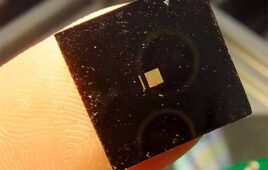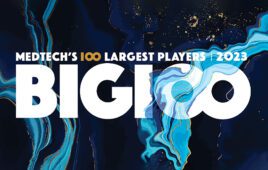
A basic fMRI pattern. [Photo courtesy Wikipedia]
Since 2011, Jack Gallant and his neuroscience lab at UC Berkeley have been able to recreate movie clips by tracking the viewers’ brain activity. They’ve also been able to predict which famous paintings people were observing.
In the past, scientists thought that the blobs that appeared during a functional MRI were just blobs. It turns out that the fMRI blobs contain patterned information that is too complex for scientists to be able to process. So researchers such as Gallant are now training machine learning tools to process the information and look for patterns in the brain activity, according to Vox.
The machine learning tools go through large amounts of brain data to find and decipher the brain activity patterns. Using this artificial intelligence allows scientists to predict human perception. Neuroscientists are using machine learning tools for encoding and decoding the brain. Encoding is when the machine learning tries to predict what a stimulus will do to brain activity. Decoding is when they use brain activity to predict what someone is looking at.
With this information, scientists hope to get a better understanding of how the brain works so they can treat the brain when it is inflicted with different types of diseases.
Neuroscientists are relying on these machine learning tools to diagnose and treat mental disorders. Psychiatrists currently use clinical conversations to determine if a person is suffering from a mental disorder such as schizophrenia. Machine learning tools could go through the data from MRIs and look at the patterns that relate to the mental disorder and use that information to make a diagnosis.
Scientists are also hoping that these machine learning tools will help predict how the brain will respond to different drug treatments for depression.
Read more in-depth about this study at Vox.com.
[Want to stay more on top of MDO content? Subscribe to our weekly e-newsletter.]




